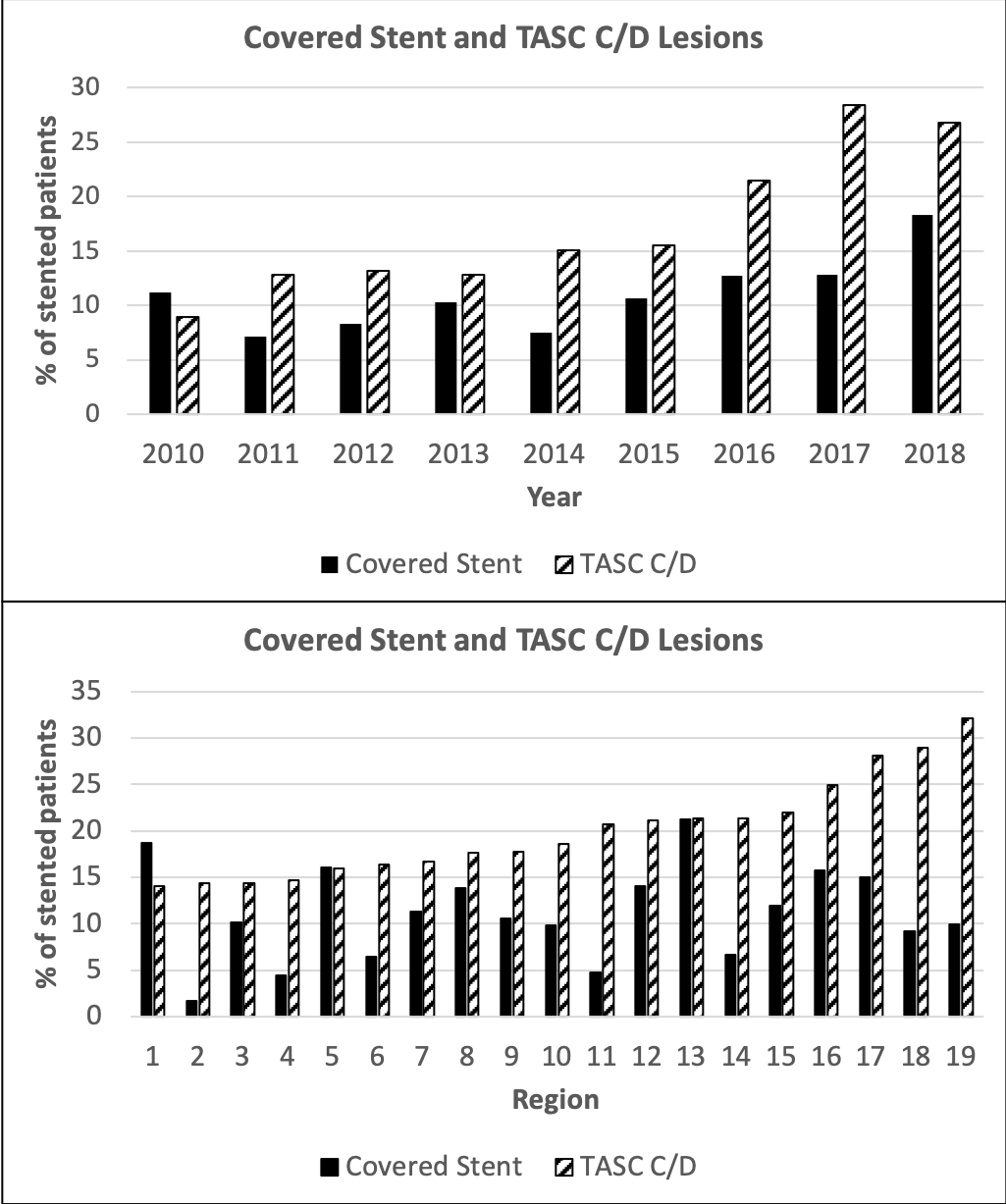Nationwide Trends And Regional Variability Of Covered Stent Utilization In The Common Iliac Artery
Karim M. Salem, MD1, Michael C. Madigan, MD1, Abhisekh Mohapatra, MD1, Othman Malak, MD1, Donald Baril, MD2, Eric S. Hager, MD1, Mohammad H. Eslami, MD1.
1UPMC, Pittsburgh, PA, USA, 2UCLA, Los Angeles, CA, USA.
OBJECTIVES: Covered stents (CS) and bare-metal stents (BMS) are both frequently used for treatment of aortoiliac occlusive disease. We aimed to characterize the trends in use of CS vs. BMS over time in these lesions.
METHODS: A query of the Vascular Quality Initiative registry (2010-2018) was performed from for all peripheral vascular interventions (PVI) involving common iliac arteries. Cases were categorized by each artery stented and whether a CS or BMS was placed. The frequency of CS use over time was reviewed as well as regional variation.
RESULTS: We identified 48,814 cases where the common iliac artery was endovascularly treated. Stenting was performed in 25,720 arteries (52.7%). Overall 11.9% (3,073) of stents were CS. Covered stent placement was more frequent in the patients requiring bilateral common iliac stenting (46.5% vs 39.3%, P<0.001). Categorization of common iliac lesions based on Trans-Atlantic Inter-Society (TASC) classification revealed that type C or D lesion frequency increased throughout the study period (9.0% in 2010 to 26.8% in 2018). Use of CS similarly increased from 11.2% in 2010 to 18.3% in 2018 over time. TASC C or D lesions had overall higher rates of CS use (17.1% vs 11.0%, P<0.001). Of all stents placed across 19 regions, CS use ranged from 1.7% to 21.2%, with a broad range of TASC C/D lesions 14.1% to 32.1%. The ratio of CS use to TASC C/D lesion type ranged from 0.23 to 1.34 across regions.
CONCLUSIONS: There is significant variability in the use of covered stents for endovascular repair of common iliac lesions. Covered stent use and common iliac lesion complexity have both increased over time, however, significant regional variability exists in the selection of stent type. Evaluation of long-term results will answer if this practice is cost-effective. 
Back to 2020 ePosters
